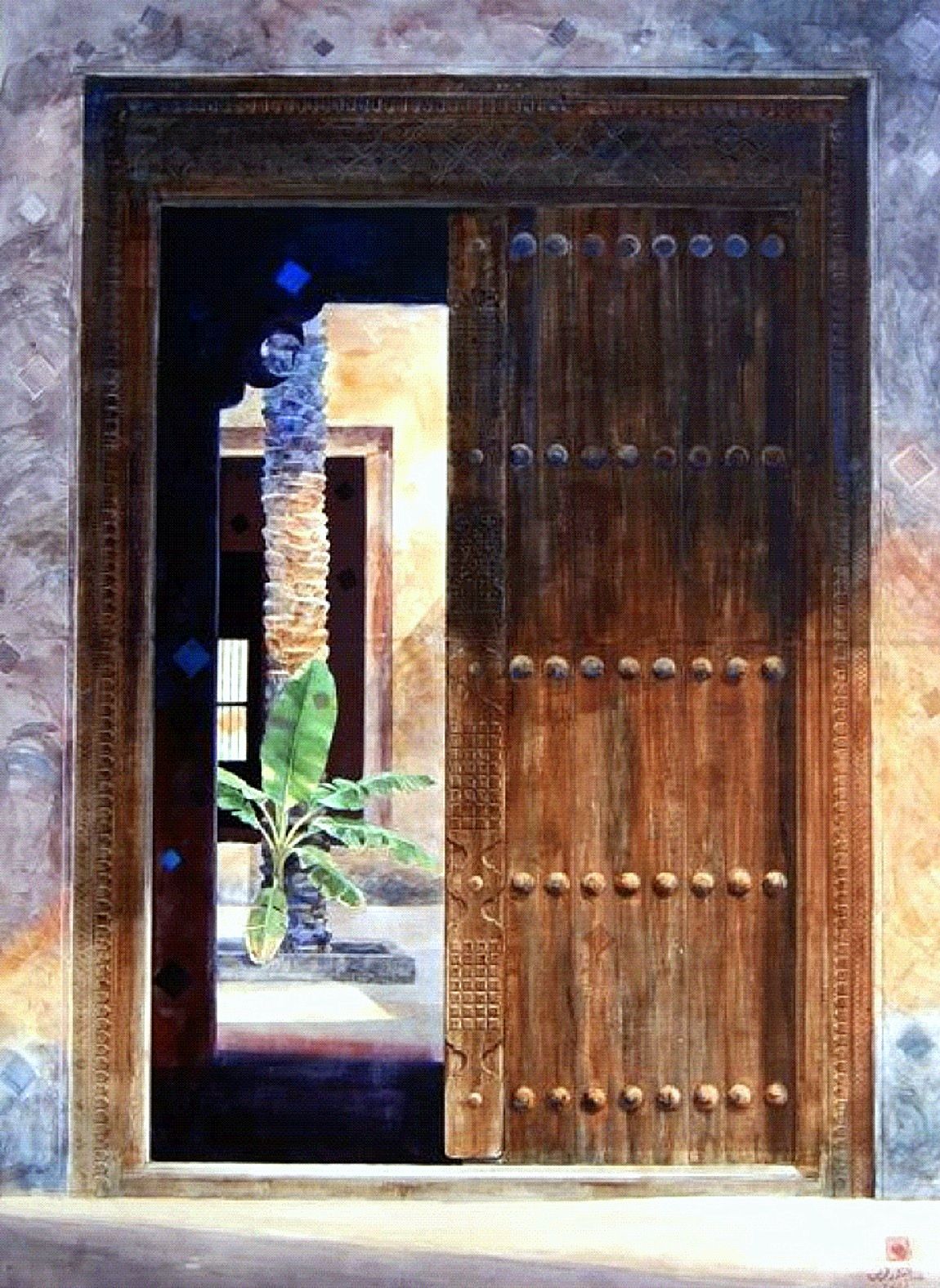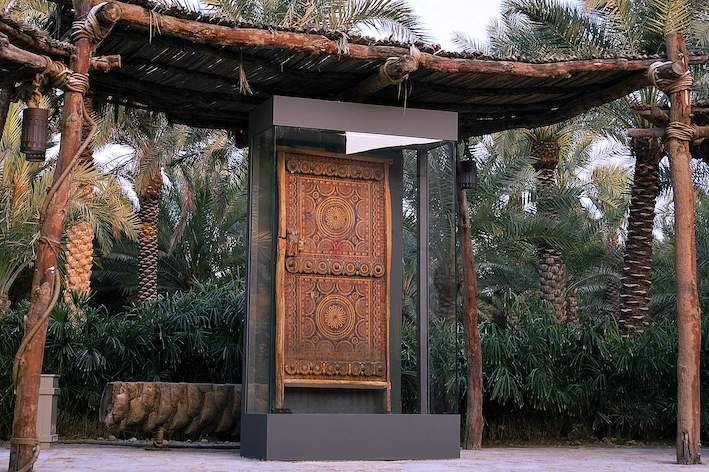Preserving Artistic Echoes from the Past
Alhada Summer, 1974. Oil on Canvas. 100 x 120cm. Courtesy of Abstract Art gallery.
Art can be like a special door that takes us back to the past of an entire nation. Yousef Jaha, Abdulhalim Radwi, Abdulaziz Alhammad; these are some of the first artists who initiated the Saudi art scene we see thriving today, and their artwork has done more than open a door for today’s Saudi artists to follow in their footsteps. They’ve helped narrate Saudi history, preserve places that no longer exist, and plant visual memories into our minds for places that we haven’t lived; all so that we may know our history and preserve it for generations to come.
Misk Art Institute’s “Echoing the Land” exhibition, which ran from October 2023 to March 2024, uncovers the beginnings of Saudi art through 55 works of art by 20 pioneering Saudi artists, and explores the Saudi landscapes around them and their influences on their work.
In this article, we speak with Basma Alshathry, lead of the curatorial team of the exhibition and Chief Curator at the institute, about the beginnings of this captivating scene, the idea behind the exhibition’s theme, the importance of art documentation, and much more.
We, the Curatorial Department at Misk Art Institute, care a lot about research; namely, research on the beginnings of the Saudi art scene. We have been researching this scene thoroughly for more than two years, only to conclude that there are a lot of knowledge gaps within Saudi art history. We did not like that. We felt like we needed to contribute to filling in those gaps and that even we, as an entity, needed to learn more about the history of Saudi art.
So, this has really prompted us to investigate the early beginnings of art in Saudi Arabia, the results of which surprised us. We learned that it all started in 1953 when an institute in Makkah encouraged their students to create and showcase artworks in the school’s exhibition. One of them was the renowned Abdulhalim Radwi, who was 15 years old at the time.
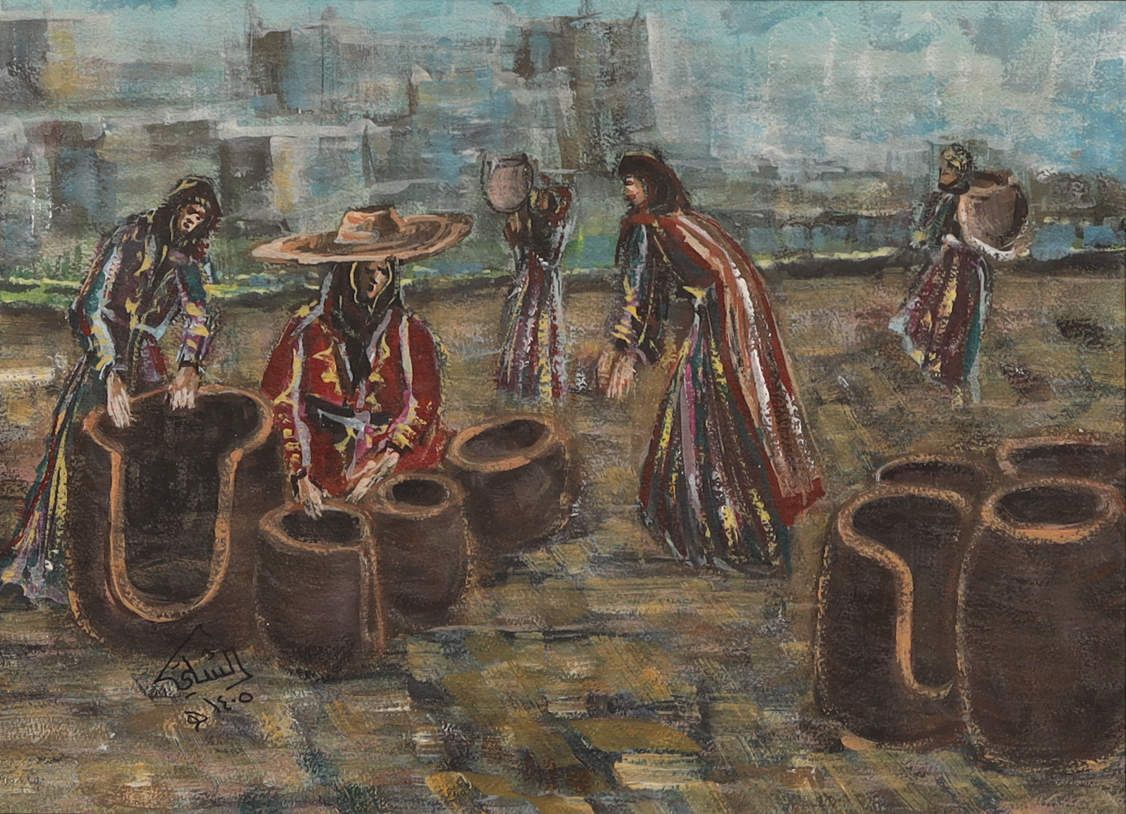
Almayfa, 1985. Acrylic on paper. 42 x 30 cm. Courtesy of Abstract Art gallery.
Our research led us to uncover the beginnings of the various activities that took place in that decade which had helped to support the development of the art sector. This includes when schools added art as part of their curriculums for the first time in 1958 and the first exhibition launched by King Saud in a university in Riyadh. Soon after, many artists started coming out and different art scholarships were launched. Saudi artists started traveling abroad to understand art and how to create it as well as how to teach it so that they could come back and spread that knowledge.
Coming across these stories and bits of Saudi art history was really important for us—we wanted to make sure it was accessible. We came across 20 early Saudi artists whose works—55 in total—we were able to showcase in the exhibition. The name, “Echoing the Land,” comes from the one common thread between all of them: the influence of the environment, ever-so-present in their works.
All the artists we met with or whose art studios we visited kept saying, “an artist is a child of their environment.” They kept repeating that because they felt a sense of belonging and connection to the environment around them. This was very inspiring to us because these artists were from different regions of Saudi Arabia, which were all diverse environments, yet each impacted the artists equally.
So, we came up with the name of “من حولهم” in Arabic or “Echoing the Land” in English, which highlights the artwork of these artists, their talents, and different influences based on the environments around them. Through the exhibition, we also wanted to document and archive, which was one of our main goals at Misk Art Institute. We borrowed the works from inside and outside the Kingdom, from private collectors, institutions, art foundations, galleries, and the artists themselves. There is one piece that we borrowed from Abdulrahman Alsoliman which previously hadn’t left his art studio in his home since the 1980s.
Gathering these artworks was important for many reasons. One is that we got to display all these disparate pieces into one physical space for all to enjoy, such as the 6,000 students who had visited the exhibition. There is also the purpose of cataloging them, which has made them accessible for everyone, including local and international researchers, artists, and art enthusiasts. We feel that this is a huge contribution to the Saudi art scene.
We’ve always had a connection to these pioneering artists but we aim to work with them now in a more serious manner. Certainly, “Echoing the Land” inspired a series of solo exhibitions that focus on early Saudi artists and their legacy. The inaugural edition—highlighting Taha Alsabban and Yousef Jaha—launched in May of 2024.
We got a lot of different responses to the exhibition that were mostly positive. One of them made us really happy, which was the excitedness to see Abdulaziz Alhammad’s artwork—which dates back to the 1960s, and people hadn’t previously had access or opportunity to see. As I said, there weren’t enough art archives to really see some of the most important art that was made back then. We had one artwork in the exhibition by Alhammad—the only one that I have ever seen by him—and people were pleasantly surprised and happy to see it in person and to engage with it.
We also had very important works of art that did not reside in Saudi Arabia. Abdulhalim Radwi’s artwork, for example, belongs to Mathaf in Doha. People were very glad to see it in person here; they celebrated the artwork which was visiting home for a while.
To be honest, you ask a tricky question because I could tell a story about each and every artwork but I’m going to keep it at two.
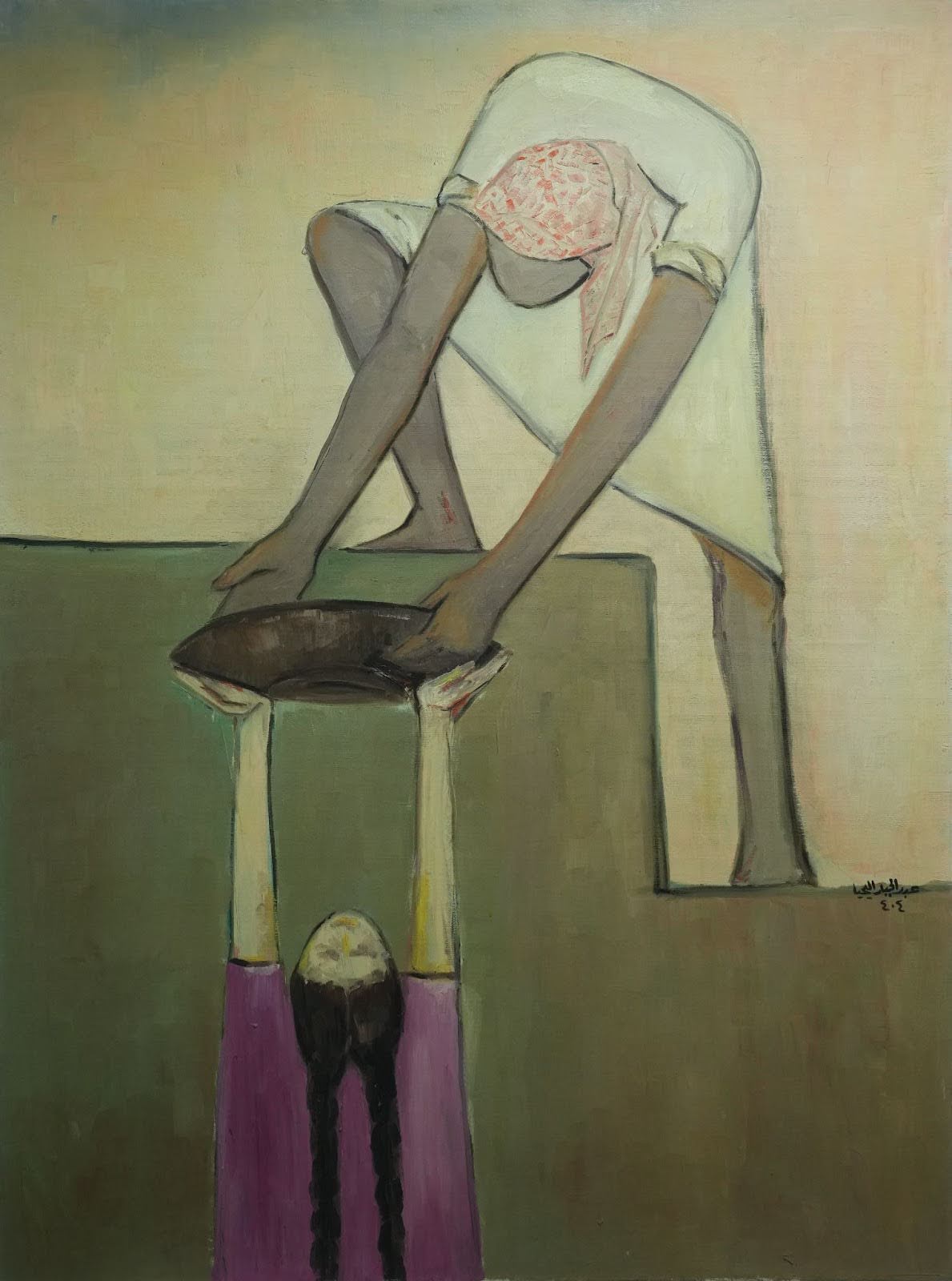
Building, 1983. Oil on Canvas. 122 x 90.5cm. Courtesy of Hewar Art Gallery.
If we don’t do it now, we will lose it forever. It’s as simple as that. If we don’t protect our own history and write it, we will lose it forever. We can’t let that happen because it carries so much of our visual memory, our identity, and who we are. Whether it’s studying these artworks, talking to a lot of the living artists, and getting this insight from spending time working on this exhibition, it all made me realize that these works mirror so much of Saudi history.
Saudi history also requires documentation through visual art. For instance, Dr. Fouad Mougharbel is an artist from Madinah who showcased two paintings in the exhibition of two areas in Madinah that no longer exist. At that time, we didn’t have cameras or other tools to document things like we do now. It was these artworks that protected and safeguarded so many memories, moments, and assets forever.
This is something that makes it absolutely critical for us to continue protecting these works, so that whatever they hold does not get lost. Abdulrahman Alsoliman, who is very close to his hometown of Al-Ahsa in the Eastern Province, documented so much of the city’s architecture and the relationship between the city’s people and spaces. We didn’t have other ways to document; it was either done orally or through art. It’s a duty for us to safeguard and protect these legacies.
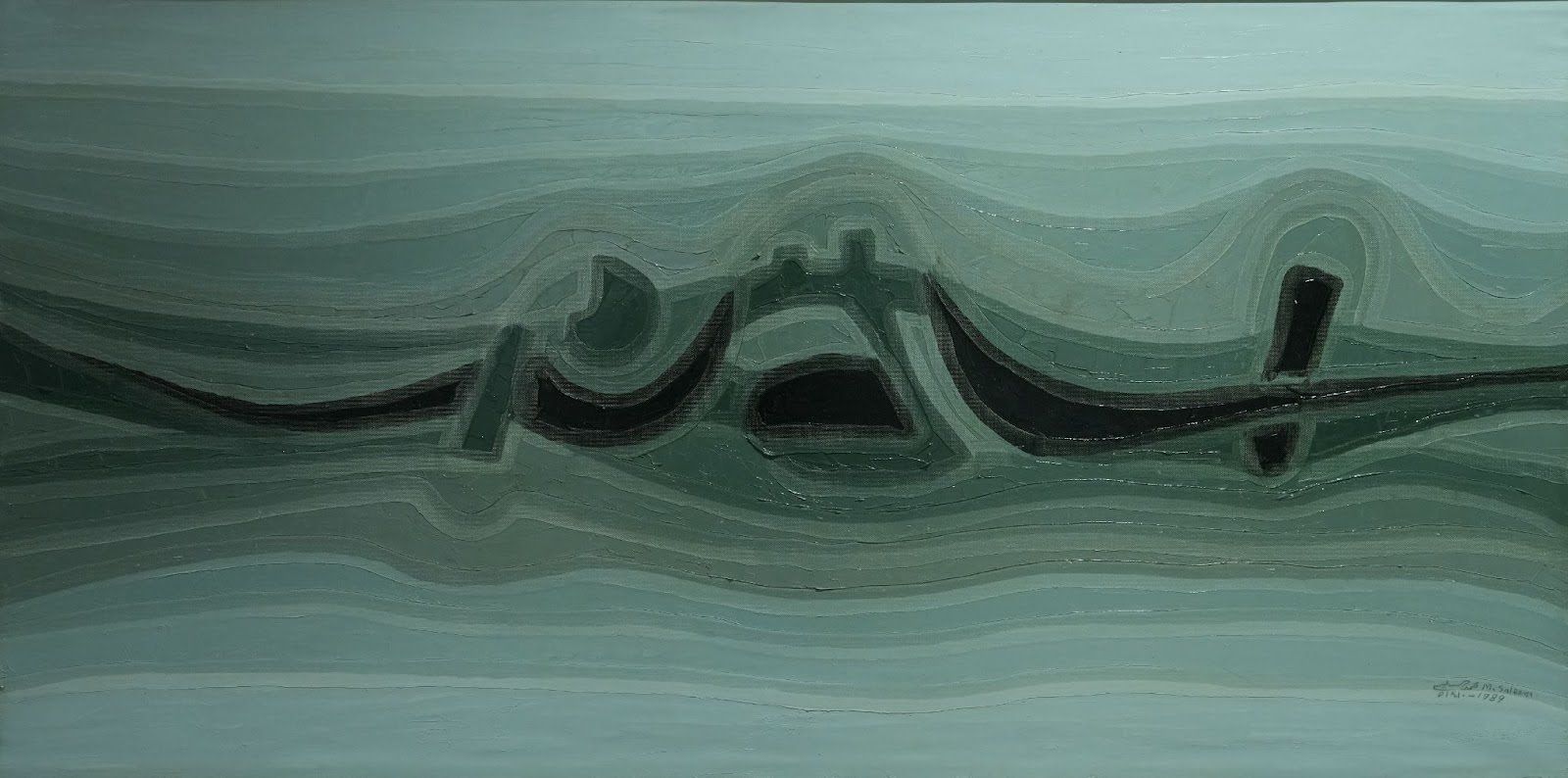
Untitled, 1989. Oil on Canvas. 58.7 x 118.8cm. Courtesy of Hewar Art Gallery.
I’m a person that really believes in the importance of knowing your history. I think it’s really important to know a little about how things started. It’s very important to be aware even if you’re an emerging Saudi artist who is absolutely not into painting and art concepts that these pioneering artists started. If not for anything, then to feel a sense of pride and to carry this knowledge and share it.
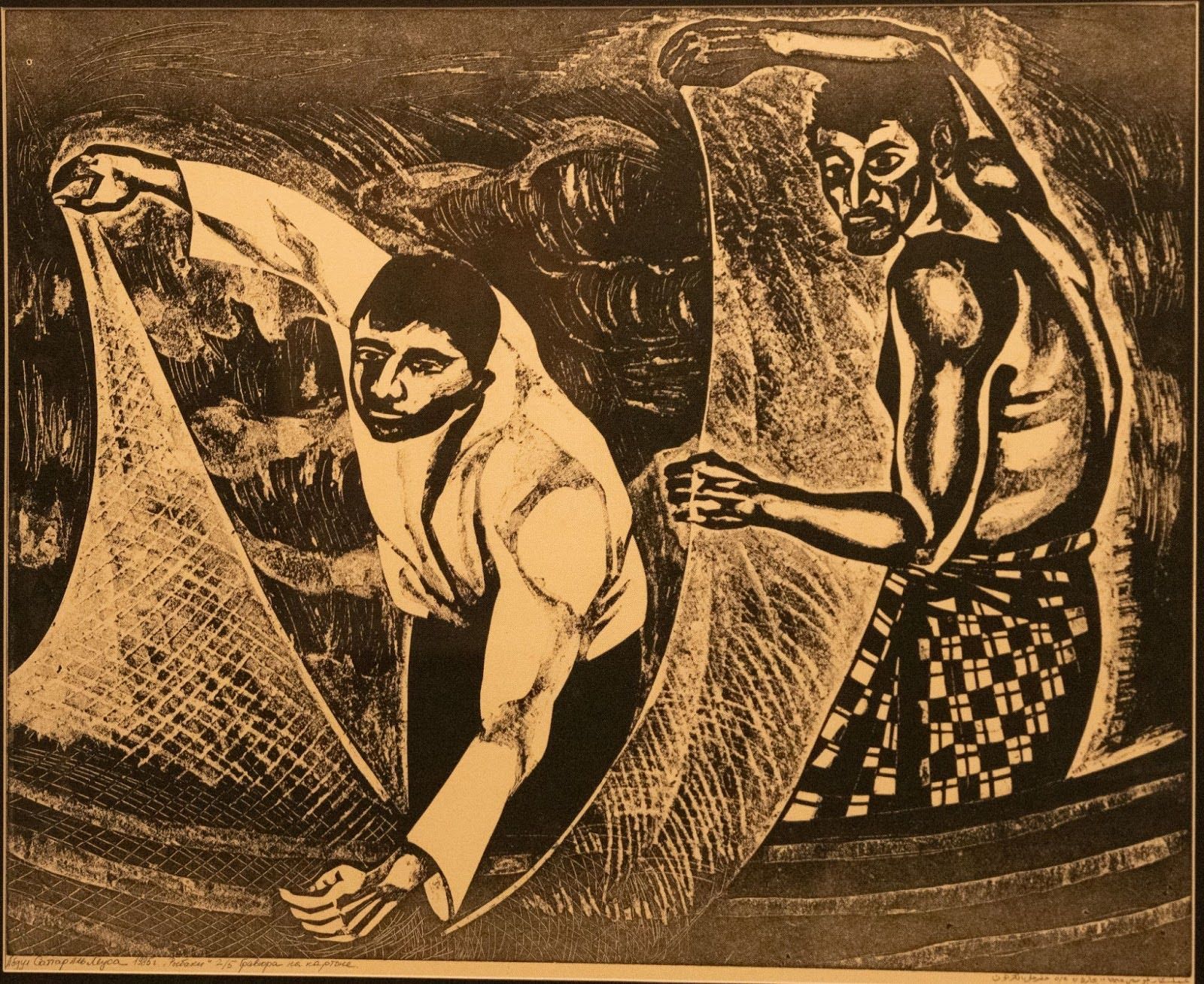
Fisherman 5/5, 1985. Relief Print. 70 x 55cm. Courtesy of the artist.
You’ve put me in a tough position! Given my work, I really can’t have favorites. I have to say, though, that working with pioneering artists occupies a very, very, very special place in my heart than any other type of artists or exhibitions. The sense of purpose it gives me is unmeasurable. Working with these older artists who have so much experience and knowledge made me start seeing them as teachers. I consider them all to be professors of Saudi art history. Working on this exhibition made me feel like a student (and a very lucky one) with my whole team.
This exhibition, of course, was curated by the Curatorial Department, so we all learned so much from these individuals who were extremely generous with their knowledge.
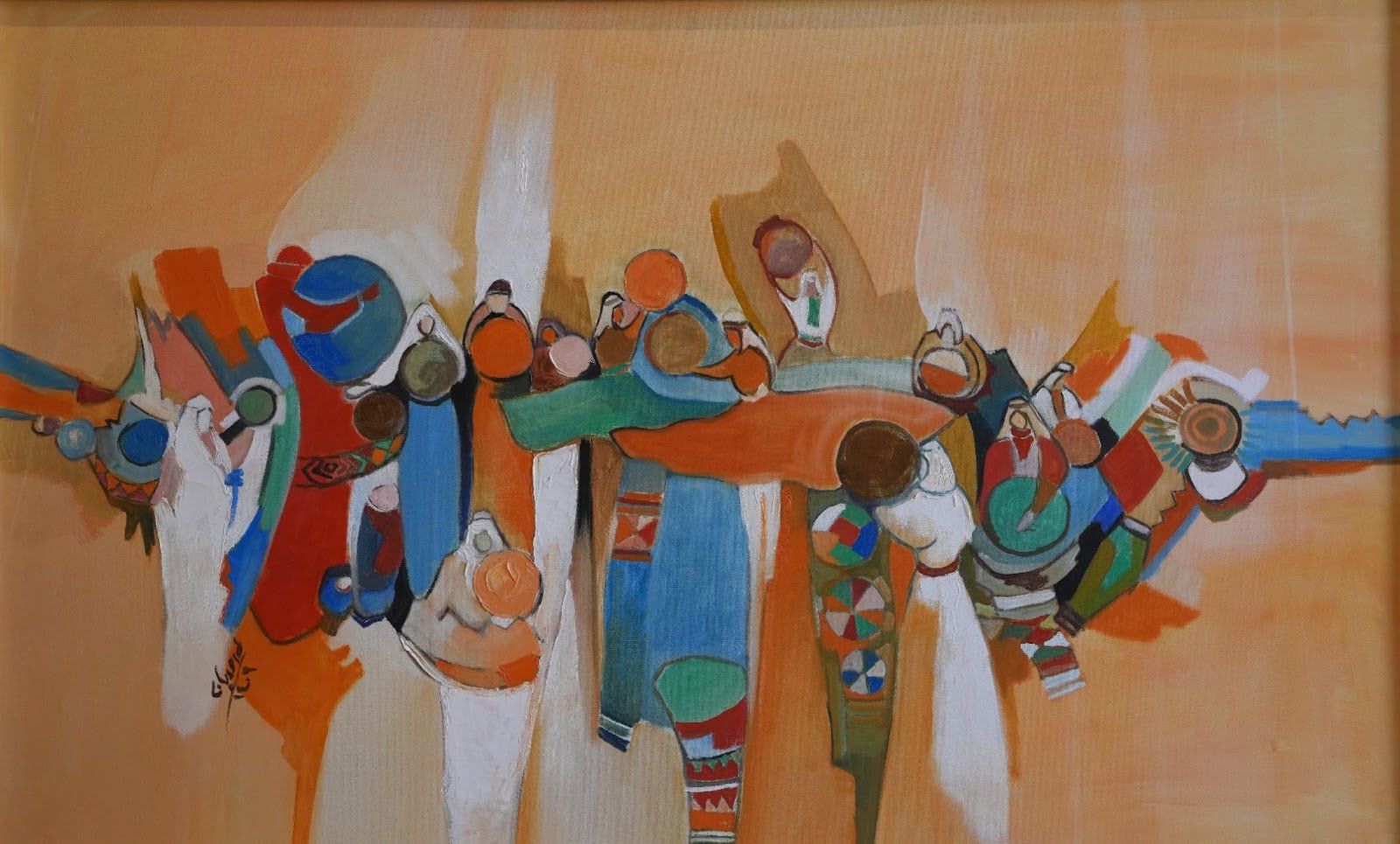
Untitled, 1988. Oil on Canvas. 75 x 120 cm. Courtesy of Abstract Art gallery.
I do want to add one thing: the exhibition didn’t only have a group of artworks, but it also had a section for showcasing archives, which was really important for us. These archives had different photographs of these artists and newspapers that highlighted articles or photographs of these artists and their works. There were books and invitations to exhibitions. These documents were as important as the artworks because they really showed the value of these artists and put it in context for a lot of young visitors we had. The presence of archives in art exhibitions is very important—they put things in context.
We also really hope to inspire emerging artists to archive and keep archives, and to document and save their information.
Lastly, if this interview made you fall in love with the early Saudi art scene and the pioneering artists who initiated it, do not miss the chance to visit the inaugural edition of Misk Art Institute’s Solo Series which highlights the artistic legacies of two legendary pioneering Saudi artists: Taha Alsabban and Yousef Jaha. Details are here.
